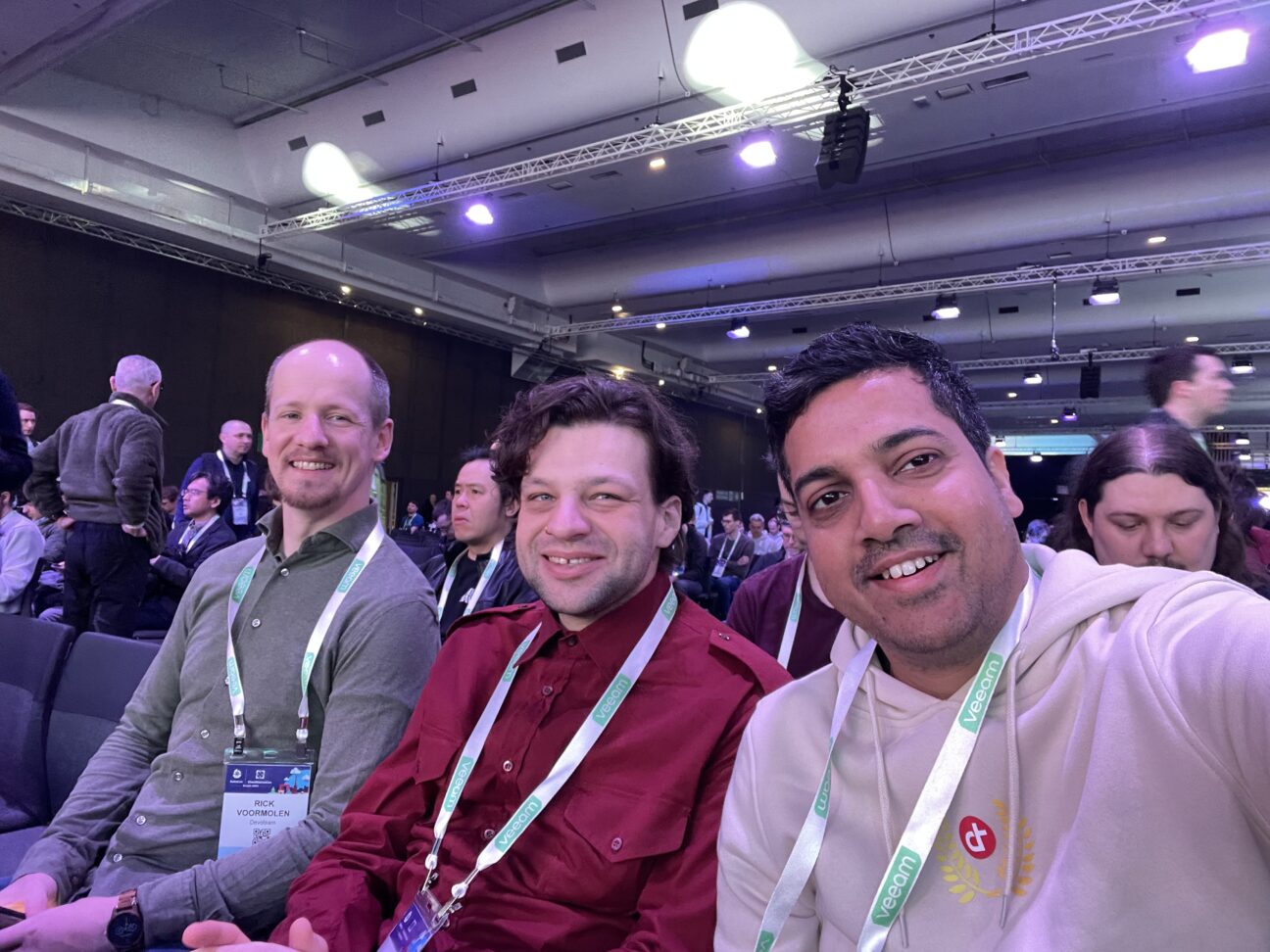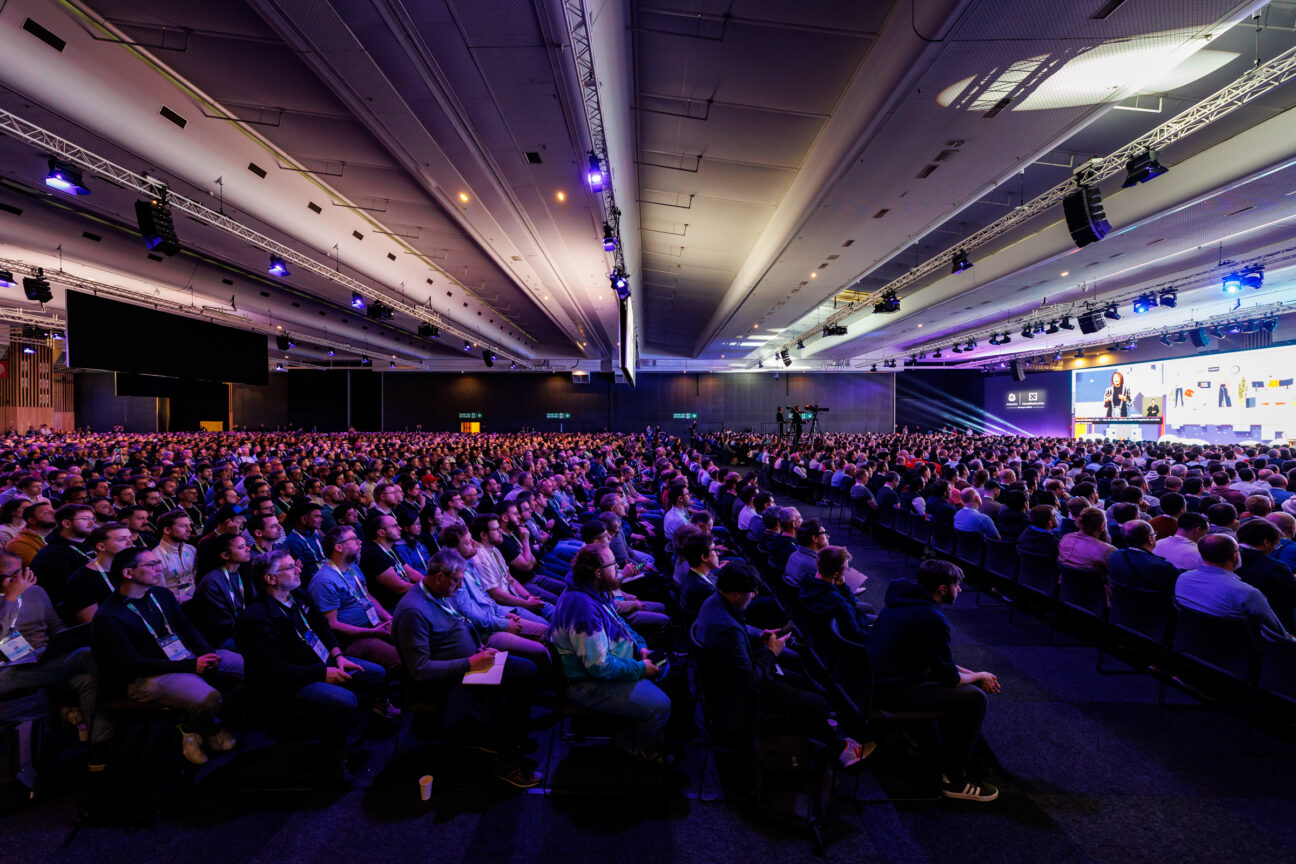This year’s KubeCon + CloudNativeCon in Paris marked a pivotal moment in the evolution of Kubernetes, celebrating a decade of Kubernetes’ groundbreaking impact on the world of technology. Our consultants, Gopal Ramachandran, Rick Voormolen and Frank Boogaard, attended the four-day event and are here to share their key takeaways and favourite talks. Join us as we break down the highlights of KubeCon + CloudNativeCon 2024.

Our general takeaways of KubeCon + CloudNativeCon
- Gopal: Cloud Native ❤️ AI. The opening keynotes on day 1 highlighted this fact, together with the separate AI track that ran throughout the day. There are several parallel efforts towards making Kuberetes the ubiquitous choice to run AI and ML workloads. The new Dynamic Resource Allocation (DRA) feature upcoming within Kubernetes will allow us to schedule GPUs in a similar fashion as we do regular workloads in Kubernetes today. The CNCF AI Working group’s whitepaper is a great read on the current state of cloud native technologies supporting AI development and usage.
- Rick: 10 years of Kubernetes, which is an impressive feat on its own. But the way we became reliant on Kubernetes and how it is transforming towards a generic purpose workload orchestration platform for all workloads (traditional compute, stateless, stateful, AI and ML) is amazing. This makes me conclude that there is no reason why you should not be using Kubernetes and use it as a strategic pillar for your current and future workload.
- Frank: After three solid days of diving into Kubernetes talks, my main takeaway is that the community’s ambition isn’t just to perfect Kubernetes as the ultimate tool for container orchestration. They’re also expanding its use cases to make it a more versatile platform. Embracing tools like KubeVirt for running VMs on Kubernetes clusters, alongside the push into using WebAssembly containers through Kwasm, shows how Kubernetes is stretching itself in the tech infrastructure. Ten years down the line, we’ve definitely moved past seeing Kubernetes as just a container specialist. Now, it’s shaping up to be the perfect candidate to orchestrate all sorts of cloud workloads.
Our favourite talks we attended
- Gopal: There were several insightful talks, like the 10-Year Detour Keynote by Solomon Hykes or thepanel discussion on Revolutionizing Cloud Native Architectures with WebAssembly. However, I would like to highlight a talk which I missed during the actual KubeCon and watched back later. This is the Building Container Images the Modern Way by Adrian Mouat. Adrian kicks off the talk with “Docker is doing to apt what apt did to tar”, and takes us through a very practical journey of the evolution of how we build applications. He takes us through how build strategies have evolved in order to make the images smaller, build times faster, and capable of addressing concerns such as SLSAs and SBOMS. This is a fast-paced talk full of practical advice and includes a variety of modern tools like buildkit, buildpacks, Dagger, ko, Apko, Rockcraft and Nix.
- Rick: I really enjoyed the talk How We Are Moving from GitOps to Kubernetes Resource Model from Swisscom about the way they modernized their platform, extending Kubernetes capabilities by adding operators which translate ConfigMap configurations towards the Netconf configuration management protocol. This allows them to even bring applications which are not traditionally supported through GitOps into this modern era.
- Rick: Another impressive talk was about How Spotify Re-Created Their Entire Backend, where they explained to us how they leveraged their Backstage development platform to rebuild all their Kubernetes platforms from scratch without any downtime. And this while they kept service to half a billion listeners. Quite an impressive feat and a talk which had a few good takeaways:
- Own the pain: when doing migrations as a platform engineering team, you cannot expect that all your development teams fall in line when you need them to. Especially on a larger scale where you have 10s or even 100’s of engineering squads supporting even more applications. It is up to you as an engineering team to ensure that you migrate the workload and that you have tools available in order to do so.
- Idempotency at all stages: during your migration, you want to ensure that steps always have the same outcome. This allowed them to migrate applications without any downtime with the following process: validate if it is okay to start the migration, pin the application to prevent changes during the migration operation, double deploy the application on the old and new environment (this is a temporary resource cost for reliability), gracefully shift the traffic, so end users are slowly migrated towards the new environment, clean up once the traffic has been fully migrated and remove the double deployment and finally, unpin the application, so developers can deploy again.
- Frank: The keynote Accelerating AI Workloads with GPUs in Kubernetes by NVIDIA stood out for highlighting how Kubernetes has grown, largely thanks to the Cloud Native community’s efforts. It was expected that Kubernetes would play a large role in machine learning, and NVIDIA’s contributions over the years have set the stage for using Kubernetes to orchestrate key GenAI tasks. This new application for Kubernetes introduces challenges, particularly in GPU resource management within clusters. NVIDIA has addressed these challenges through initiatives such as:
- Enhancing GPU integration with Kubernetes, making it easier to deploy AI workloads
- Launching NVIDIA Picasso, a platform for developing computer vision applications
- Focusing on optimizing GPU performance in clusters through topology-aware placement
- Implementing automated fault-tolerant scheduling to improve the reliability of AI training
- Developing Dynamic Resource Allocation (DRA) to give developers better control over resource management

Exciting projects that stood out to us
- Gopal: The CNCF projects landscape continues to expand and mature, with more projects advancing along the maturity levels of sandbox to incubating to graduate. I would like to highlight OpenFeature, an incubating project. OpenFeature is an open specification that provides a vendor-agnostic, community-driven API for feature flagging. I want to highlight this insightful talk on the process of instrumenting an application with OpenTelemetry, rolling out a new feature with OpenFeature, and leveraging OpenTelemetry for feature analytics.
- Rick: There were some projects standing out for me, but the project I was impressed about the most is Konveyor. This project helps you to accelerate your application modernization by fully analysing your application source code and making suggestions to ensure it becomes Cloud Native where it is not yet. It fully integrates with your GIT SCM and Jira. One setup correctly allows you to assess, prioritize and modernize your applications towards Kubernetes.
- Frank: One project that truly stood out for me is buildpacks.io. This platform changes application development by converting source code into cloud-compatible images without using the traditional docker approach. Originally developed by Heroku and later adopted by the Cloud Native Computing Foundation, buildpacks.io offers a robust solution for modernizing applications to become cloud-native.
Buildpacks.io makes application deployment straightforward for both developers and operators, emphasizing security, compliance, and easy maintenance. Its recent developments include enhancements to the pack CLI tool, updates to lifecycle management for more efficient application building and deployment, and the introduction of a registry index for easy discovery and sharing of buildpacks. The latter makes it much simpler to implement for new organisations, as it helps with decreasing the overhead.
The project is a huge help for developers aiming to streamline their workflows and ensure their applications meet the latest standards for cloud deployment. With tools like the pack CLI, developers can quickly package their applications into secure compliant images ready for the cloud.
Curious to discover more Cloud Native technologies?
Navigating the digital jungle and choosing the right technologies is not an easy task. TechRadar by Devoteam is a go-to guide that provides a comprehensive overview of what’s happening in the ever-changing technology landscape.
What can you expect from this edition?
In this year’s theme for the TechRadar by Devoteam, we’re thrilled to unveil 47 new technologies among the impressive array of 150 game-changing technologies. With a strong collaborative effort, 64 contributors have propelled our innovation forward.
Before diving into each strategic domain, we introduce a macro-trend overview from a business perspective. Explore six hot topics curated by Devoteam:
- App Development
- The Era of Data
- Multi-cloud environments
- RPA Centre of Excellence
- SecDevOps in Modern Development
- Eco-design imperative
Dive into a diverse selection of both public and anonymized use cases, showcasing the practical applications of our cutting-edge technologies in real-world scenarios.